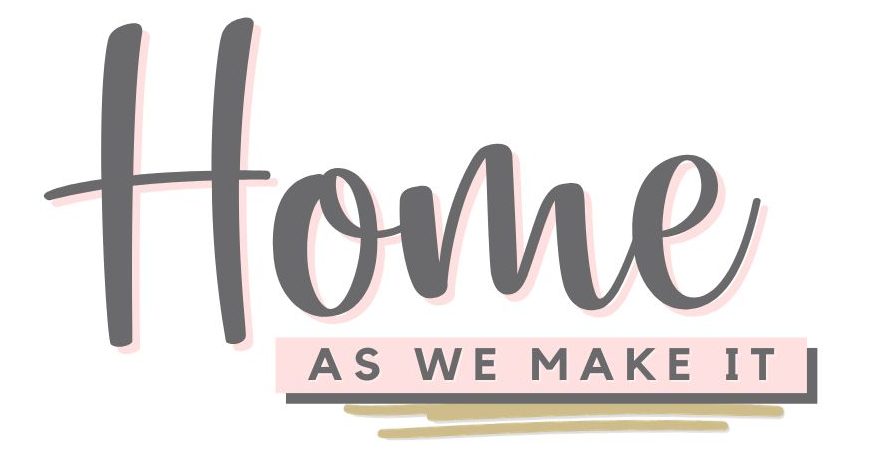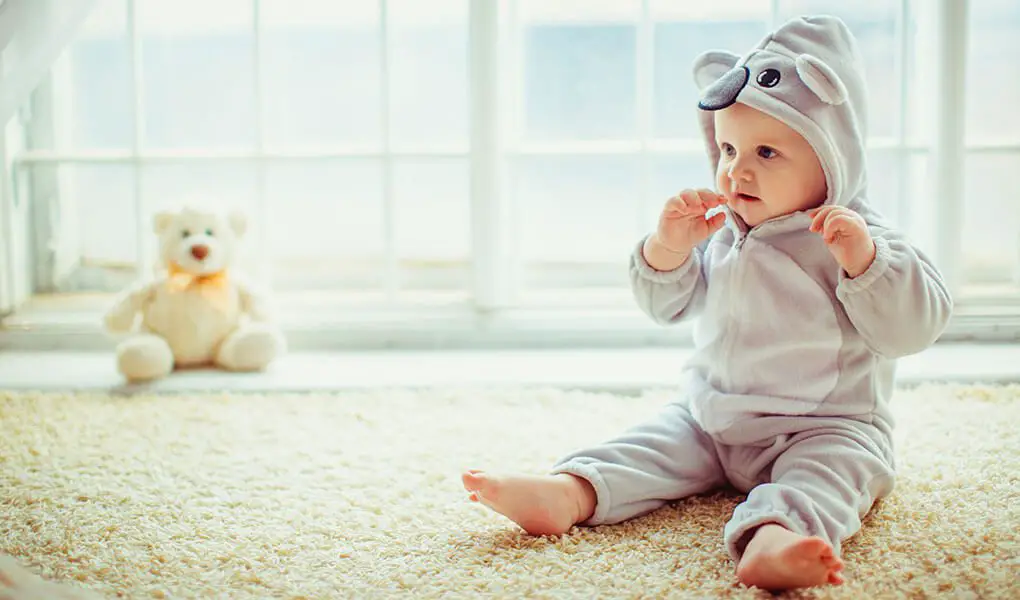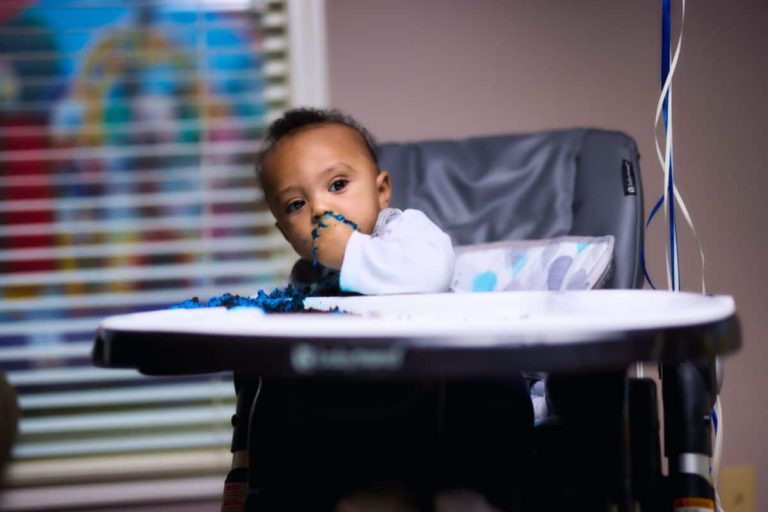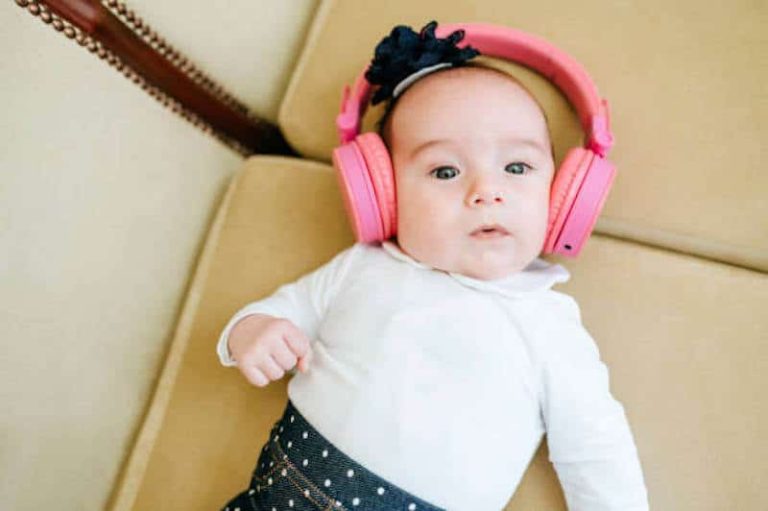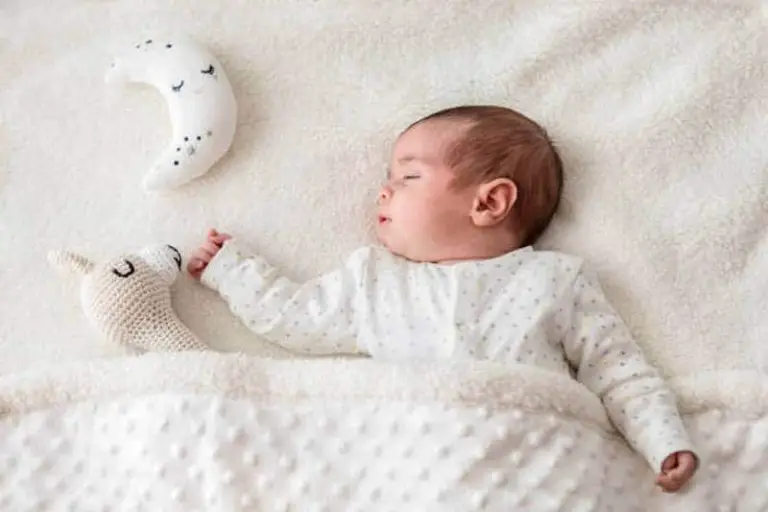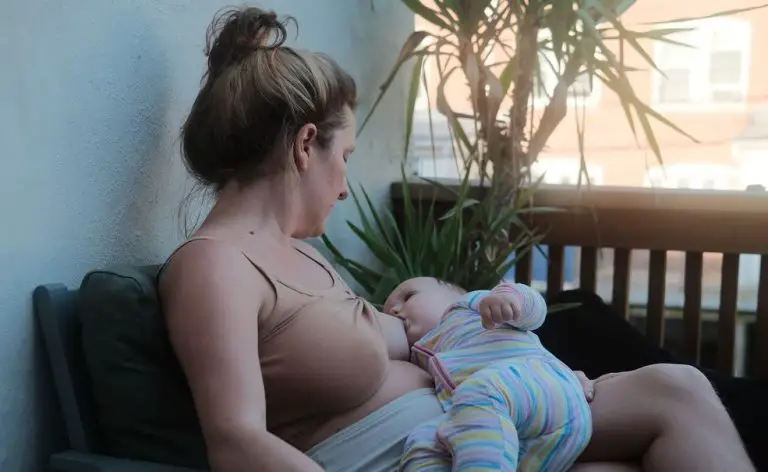6 Months Baby Development. What You Need To Know
7-month-old baby development →
Note: This post may contain affiliate links, which means if you buy from my link I might make a small commission. This does not affect the price you pay. See the full affiliate disclosure here.
Your baby is hitting the 6th-month mark! Wow, what a milestone!
But there’s so much more that’s about to happen. You’re about to start solids, your baby will start to sit unsupported any day now, and their hands will become a lot more coordinated.
So stick around and see what else is new about your 6 months baby development.
What to expect from your 6 months baby development?
Physical growth
Your baby keeps growing oh so fast! They may even look a bit chubby.
Don’t worry about that. Most babies will “get in shape” when they start moving around your home.
For now, you can rest assured that unless your pediatrician is showing concern, your baby is just perfect. And perfect for a 6-month-old girl can be anywhere between 60-72 cm (23-28 in) in height and 5600-9300 gr (12-20 lb) in weight. For baby boys that are 61-74 cm (24-29 in) and 6150-9900 gr (13-22 lb).
Sleep
Six-month-old babies sleep for about 11 hours at night with one or no wakings for feeding. The two or three daily naps could add 3-4 more hours of sleep for the day.
Still, babies are different so don’t be surprised if your baby is sleeping less than 14 hours a day. Or more than that, for that matter.
Feeding
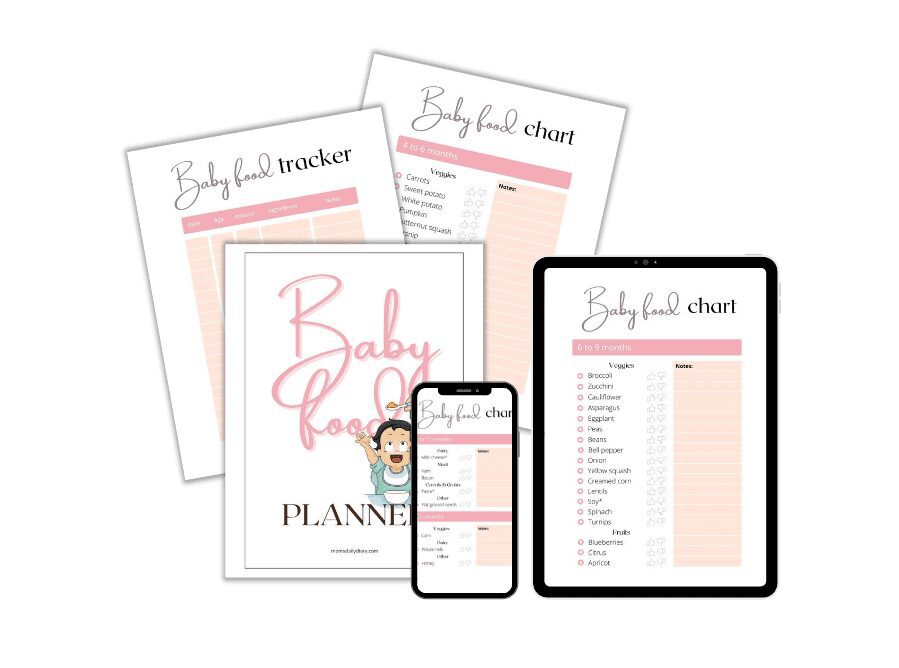
[convertkit form=2907647]
If you haven’t introduced solids already, 6 months old is the perfect time to start. Your pediatrician should advise you on the best method for your particular case.
In general, you have two popular options to choose from:
- Baby led weaning (BLW). This method requires the baby to take charge of the weaning process. In essence, you skip the spoon feeding and offer your baby a variety of finger foods. If you want to try this out, Yummy Toddler Food can guide you through everything you need to know (recipes included).
- Spoon feeding. The classic method suggests that you introduce each new ingredient for 2-3 days before moving to the next one. The idea is to look for any possible allergic reactions to the different new foods.
Both my babies have been weaned using the standard spoon-feeding method. You start with 1-2 spoons of pureed veggie on day one, double it on day two. You can give them the same veggie, mix it with a new one, or introduce a new veggie as a single puree on the third day.
On day 14 you can replace one liquid meal with solids and start offering at a different time. I prefer this to be the second breakfast when I can start introducing fruits.
It may sound complicated at first, but if you follow a system and keep a chart with all foods that have been introduced, feeding your baby solids turns out to be pretty simple.
Note: By the age of 1, your baby’s main nutrition source will still be breastmilk or formula.
Core development
When thinking about 6 months baby development, most parents think about two things: feeding solids and sitting up.
But did you know that while most babies are able to sit unassisted around 6 1/2 months, it is not so rare for a baby to start sitting up as early as 4 months, or as late as 9 months?
If your baby is not showing signs that they are ready to sit up you can help them by putting them in an assisted sitting position by using some pillows, or by getting them a learn-to-sit floor seat.
Note: Be careful when you leave your baby to sit up unsupported. They may still be a bit wobbly, so avoid having sharp or edgy objects in their close surroundings.
Introducing water cups
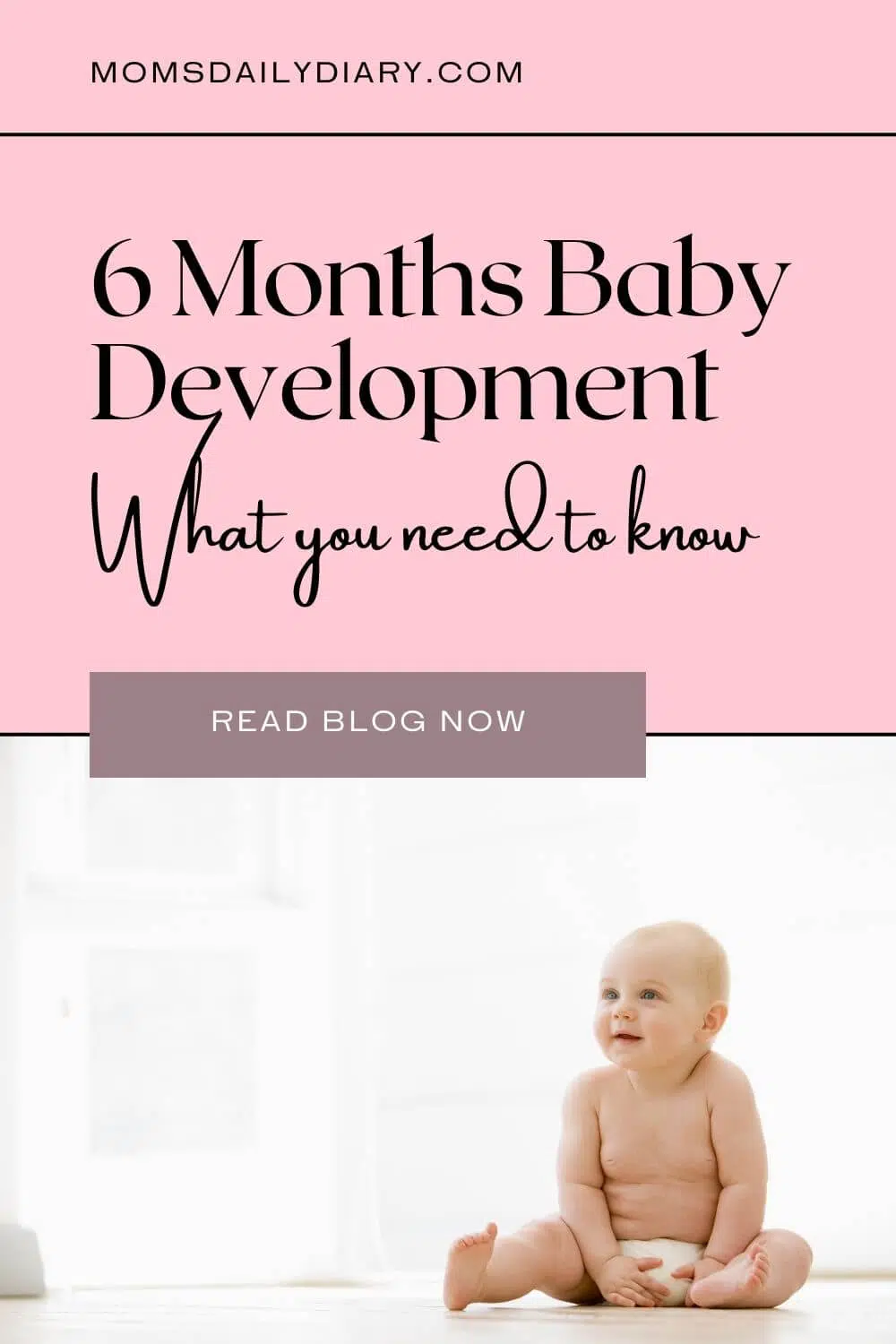
Pediatricians still argue whether babies under 6 months of age should drink water or not.
Some say that breast milk and formula are providing them with all the liquids they need. Others say that summer babies do need additional water or that you can offer them water to give them up night feedings.
Personally, I don’t know who’s right. But one thing is for sure.
When you start feeding your baby solids, you need to start giving them water as well.
And the easiest way to do it is by introducing your baby to their first cup. To make your choice easier, here are the three main types of baby cups. Keep in mind that you may need to try a few different options before finding the one your baby likes the most.
Sippy cups
Probably the most popular option, sippy cups imitate drinking from a baby bottle. They make the transition between milk and water bottles easier.
Although in general, any age-appropriate sippy cup will do the job, I recommend that you get a cup with soft removable handles and a flexible spout. This will improve your baby’s experience and they won’t reject the cup (which happens often with babies who are exclusively breastfed).
Straw cups
The type we started with and my 2-year-old still loves to this day is a straw cup. I was worried she wouldn’t know how to drink from a straw, but somehow it came naturally to her.
When choosing a straw cup, I advise you to pick one with soft straw and a cap that can be flipped down when not in use.
360° trainer cups
These cups are a great way to train your baby for the open cup later on. And they really don’t spill, the edge seals after you’re done drinking. These cups with handles are suitable for babies 6m+.
However, to be honest, my older daughter had a hard time figuring out how to close her lips around them to drink the water. Still, there are many parents that swear that this is the best type of cup they have tried and your baby may like it as well.
How to play with your 6-month-old baby?
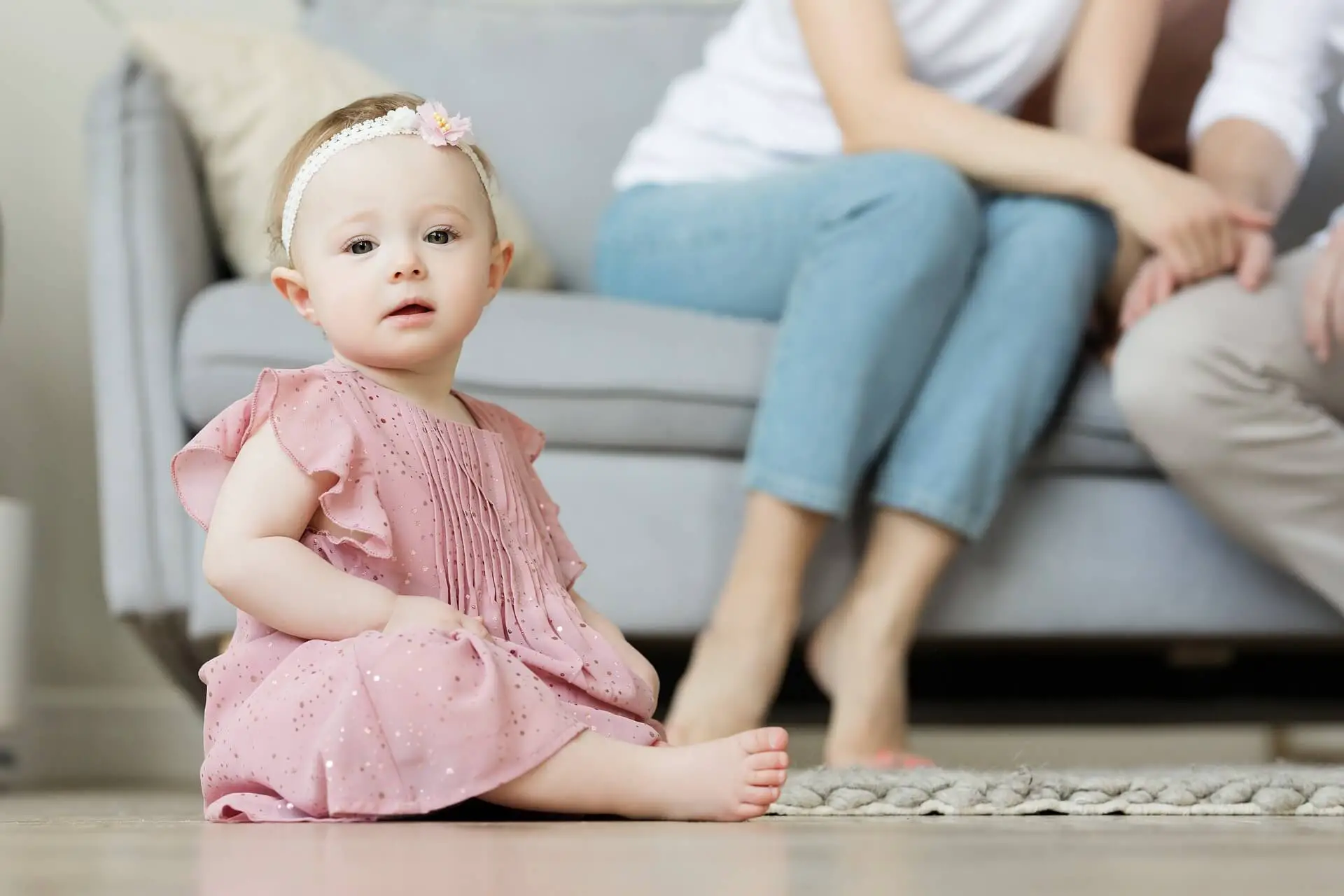
Your baby can now do more than just smile at you when you talk to them.
Here are a few ways to play with them more actively.
Bubbles
Blowing bubbles is all the rage with toddlers. But babies are fascinated by them too. Sit them up and start blowing bubbles around them.
Their expression, while they focus on each bubble and try to slowly reach for them, is priceless.
Clapping
Encourage your baby to clap their hands to the music, when they do something right, or just because it’s fun. Show them how to do it and let them imitate you. You should notice that they find the clapping noise extremely amusing.
Flying
This is a great way to play while they’re still light enough. Hold them with both of your hands and lift them up and down and all around.
This activity is not only fun but it also develops their core muscles when you hold their midsection.
Dancing
Play your favorite tunes, grab your baby, and get moving. Dip, turn around or lift them in the air. They will surely respond with lots of giggles.
Sensory bottles
Sensory bottles can be created in so many ways that it’s hard to pick just a few. Still, here are my favorites that are suitable for 6 months olds:
- Waves in a bottle. Fill 2/3 of the bottle with water and add some blue food coloring. Fill the rest of the bottle with clear baby oil, glue the cap with super glue, and you’re done. Because the water and oil don’t mix, when you shake it the liquid looks like waves.
- Smooth colors. Add colorful beads to the bottle, or anything small and colorful like tiny rubber bands, plastic stars, hearts, even glitter. Fill half of the bottle with water and the other half with clear liquid soap. Glue the cap and mix energetically, don’t worry, the bubbles will dissolve in a couple of hours. Tip: Adding more water will result in the beads moving faster, while adding more soap will slow them down further.
- Musical bottle. Create your own natural rattle by filling the bottle with dry ingredients only. You can use rice, beads, sand & shells, beans, or whatever you have at hand.
Must-have toys for 6-month-olds
I honestly believe that babies don’t need many toys. Still, there are some developmental toys that you may want to consider:
- Stack of circles. Every infant should have one of these. They promote hand-eye coordination, logical thinking, and creativity. Personally, I adore these sensory, squeaky, teething ones.
- High chair toy. Your baby will start to spend a lot of time in the high chair. So get them a high chair toy to keep them entertained when you have some work to do. What makes them different from any other toys? They have a suction base that prevents them from falling on the floor, so you won’t have to pick it up every 10 seconds.
- Play mat. Your baby is (almost) sitting up and they will soon get on their knees to crawl. Tummy time may be over, but the time to get a play mat they can explore and play on is just right.
- Bath toys. Bath time is a lot more enjoyable when you can sit and play in the tub. So get ready to stock on eye-catching bath toys for your little one. These in particular help stimulate your baby’s touch, hearing, and sight.
- Teething toys. Watch out! Teeth are just around the corner. So make sure you always have a range of teething toys that your baby can safely bite into.
6-month baby milestones
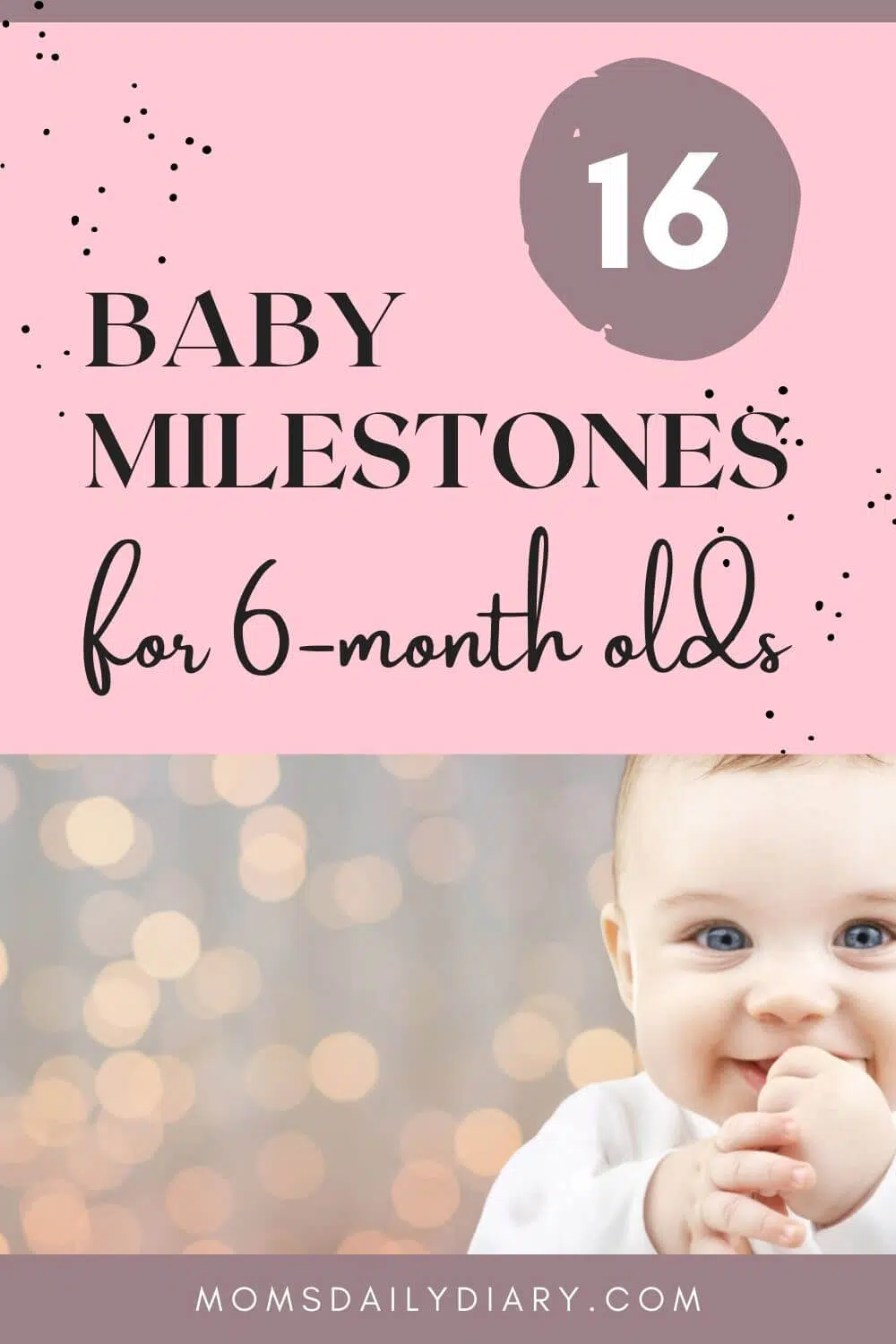
Turning 6 months old is a huge milestone all by itself. But there are a lot of other milestones1 in terms of 6 months baby development that you may also want to check off your list by the end of this month.
Social
- Recognises familiar people and likes to play with them
- Reacts to strangers
- Smiles at their own reflection in the mirror
- Responds to the emotions of others
Physical
- Rolls over front to back and back to front
- Rocks back and forth on knees and arms (beware, crawling is coming soon)
- Starts to sit up without support
- Supports their weight when standing on their legs
Verbal
- Responds to their name
- Responds to sounds with babbling
- Makes sounds when they’re happy or dissatisfied
- Involves in conversation with parents by stringing vowels like oh, ah, eh.
Cognitive
- Brings all things to mouth
- Looks around with curiosity
- Reaches out for things they want to explore
- Passes objects from one hand to another.
When to be concerned
While all kids develop differently, you may want to check with your little one’s healthcare provider if they are falling behind on some of the key 6 months baby development milestones.
Please consult your pediatrician if:
- Your baby doesn’t show affection towards people in their close circle.
- Doesn’t roll over at all
- Doesn’t reach out for things
- Cannot bring things to mouth
- Doesn’t respond to loud sounds
- Doesn’t communicate by laughing or making vowels
- Moves in a loose way and cannot support head or body
Sources:
